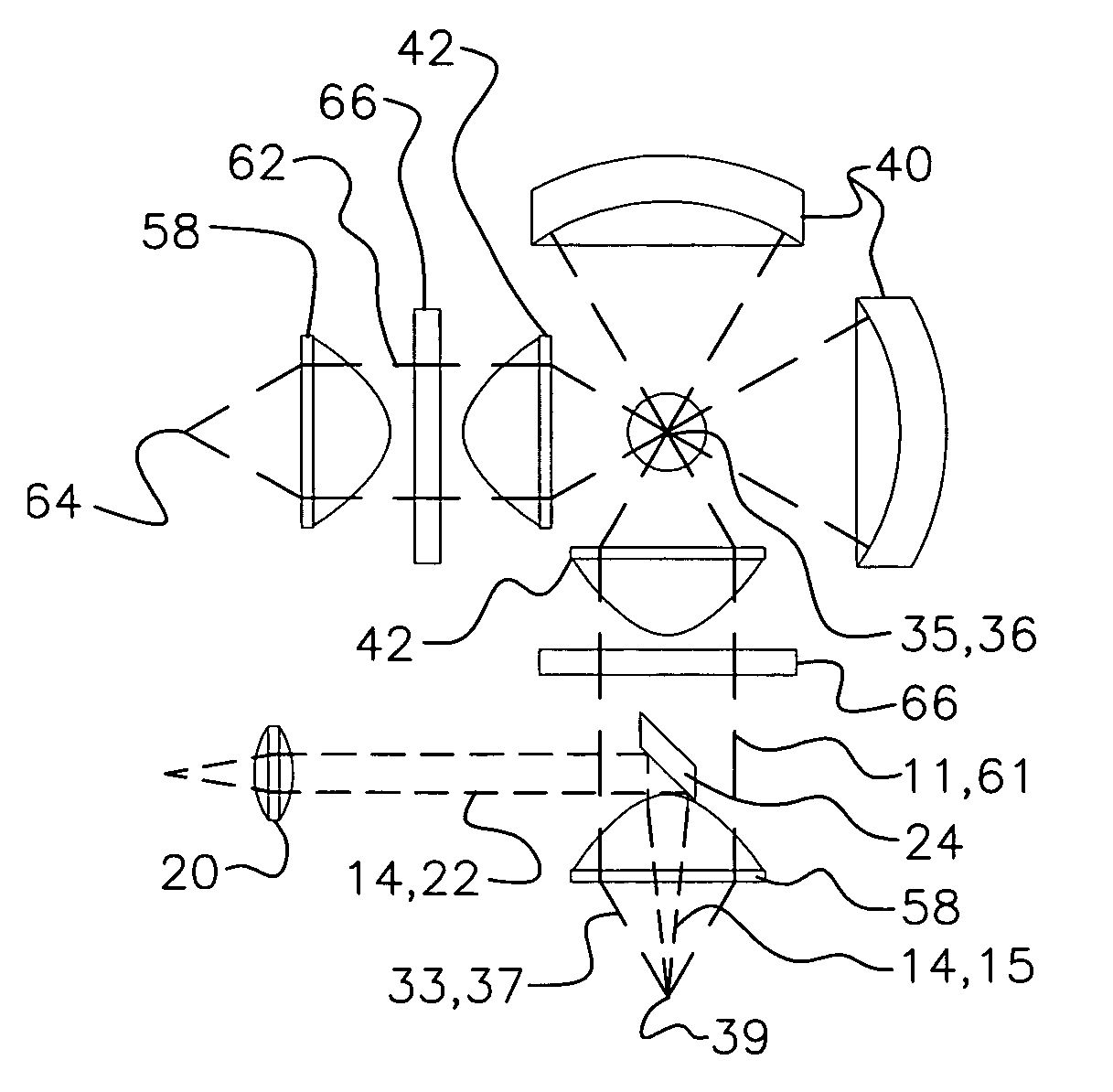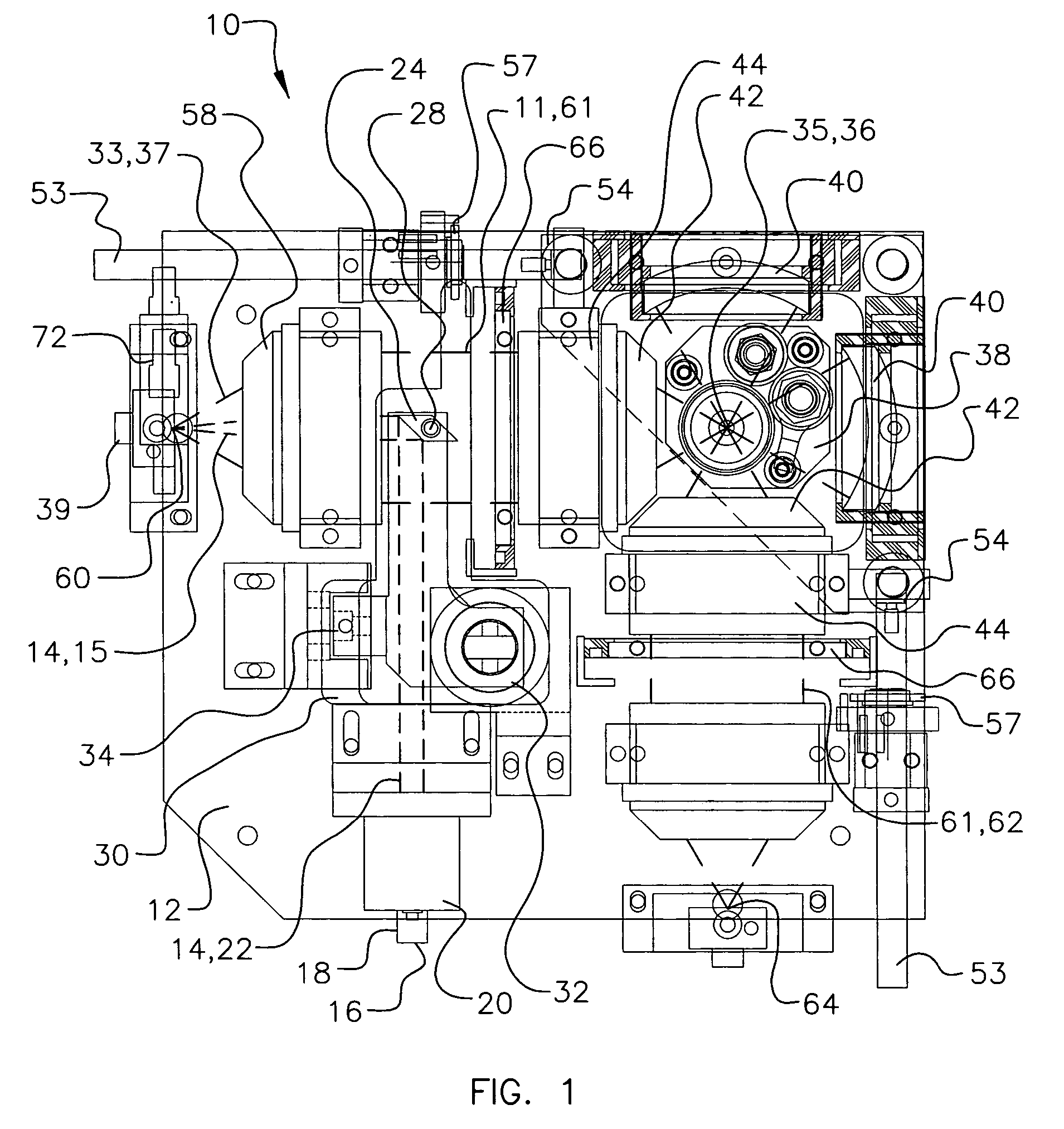Coaxial illuminated laser endoscopic probe and active numerical aperture control
a laser endoscope and coaxial illumination technology, applied in the field of fiberoptic endoscopes for vitreoretinal surgery, to achieve the effect of small illumination focus size or numerical aperture output, clear and easy to understand
- Summary
- Abstract
- Description
- Claims
- Application Information
AI Technical Summary
Benefits of technology
Problems solved by technology
Method used
Image
Examples
Embodiment Construction
[0064]Referring now to the drawings, there is shown in the Figures both preferred and alternate embodiments of the coaxial illuminated laser endoscopic probe and active numerical aperture control apparatus 10 also herein described as an illumination and laser source 10. There is provided a device 10 for providing non-coherent illumination light 11, 62 and coherent laser treatment light 14 through a single optical fiber 60 of the size typically used for laser treatment only in a safe, effective, and user friendly manner. The apparatus is especially suited for use during ophthalmic surgery.
[0065]The present art, in a preferred embodiment, utilizes a 75 watt xenon arc lamp 36 for its high luminance illumination (light density), greater than 6000° K color temperature, and greater than 95 color rendering index. A unique and useful feature is the very high luminance and small size plasma ball formed on the end of the lamp 36 cathode. If imaged correctly the plasma ball is bright enough to...
PUM
 Login to View More
Login to View More Abstract
Description
Claims
Application Information
 Login to View More
Login to View More - R&D
- Intellectual Property
- Life Sciences
- Materials
- Tech Scout
- Unparalleled Data Quality
- Higher Quality Content
- 60% Fewer Hallucinations
Browse by: Latest US Patents, China's latest patents, Technical Efficacy Thesaurus, Application Domain, Technology Topic, Popular Technical Reports.
© 2025 PatSnap. All rights reserved.Legal|Privacy policy|Modern Slavery Act Transparency Statement|Sitemap|About US| Contact US: help@patsnap.com



